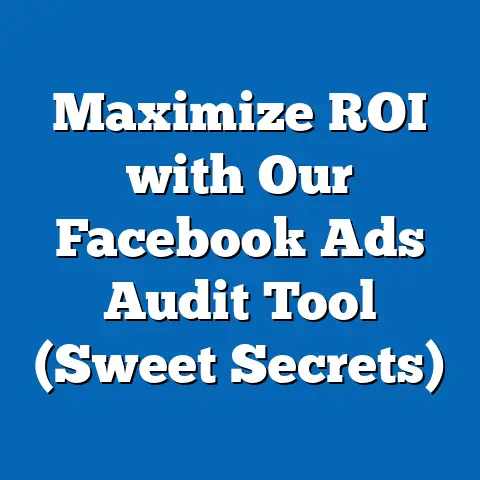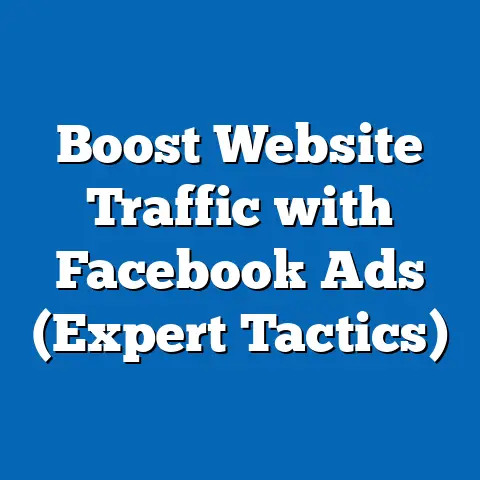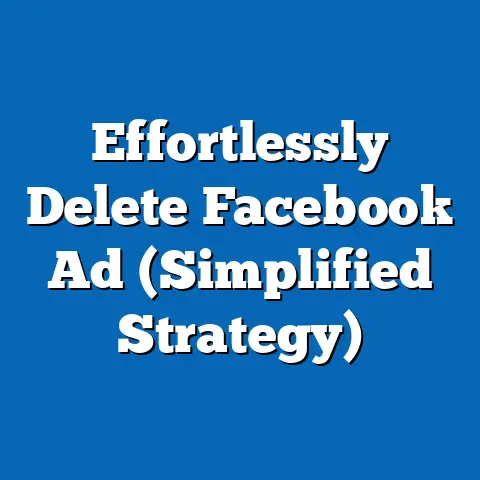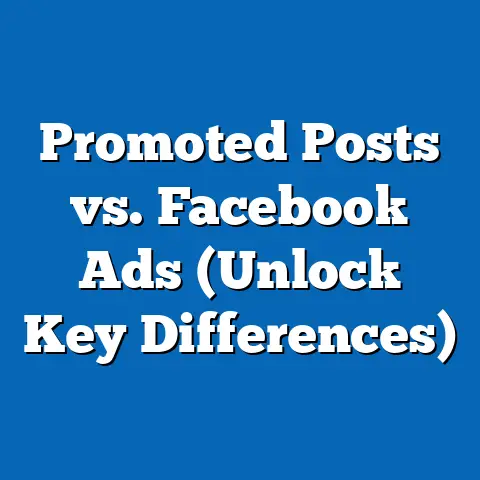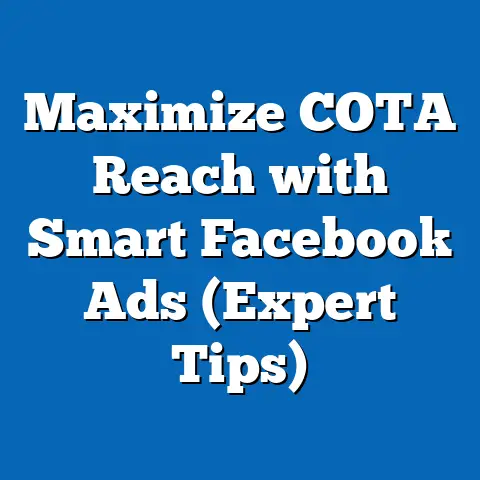Create Winning Facebook Ads for Dropshipping (Expert Guide)
Section 1: Understanding Facebook Ads
Okay, so what are Facebook ads, really? Beyond the annoying pop-ups some people see, they’re a powerful tool that allows you to reach a massive audience of potential customers based on their interests, demographics, behaviors, and more. Think of it as having a personalized billboard in front of the eyes of everyone who might be interested in your product.
Facebook ads operate within Facebook’s advertising platform, allowing you to create and manage campaigns, set budgets, target specific audiences, and track the performance of your ads. This allows you to see what’s working, what’s not, and make adjustments to optimize your campaigns for maximum ROI.
There’s a whole buffet of ad types available, and choosing the right one is crucial for dropshipping. Here are a few of the most popular:
- Image Ads: Simple, yet effective. A single, compelling image paired with concise copy can capture attention instantly. Perfect for showcasing your product’s best features.
- Video Ads: These are fantastic for demonstrating your product in action, telling a story, or building brand awareness. Video ads often have higher engagement rates than image ads.
- Carousel Ads: These allow you to showcase multiple products or different aspects of a single product in a scrollable format. Great for highlighting a range of items or features.
- Collection Ads: These combine a video or image with product listings, allowing users to browse and purchase directly from the ad. Ideal for driving sales and showcasing your product catalog.
Why is this important for dropshipping? Because the right ad type can showcase your product in the most compelling way, leading to higher click-through rates, engagement, and ultimately, sales. In fact, according to a recent study, businesses that use video ads on Facebook see an average of 30% higher conversion rates. That’s a pretty compelling reason to experiment with different ad formats!
Takeaway: Facebook ads are your personalized billboard to the world, and understanding the different ad types is the first step to creating winning campaigns.
Section 2: Identifying Your Target Audience
Now, let’s talk about who you’re actually trying to reach with these ads. I can’t stress this enough: Understanding your target audience is paramount for dropshipping success. You wouldn’t try to sell snow shovels in Miami, would you? (Okay, maybe as a gag gift, but you get my point!)
Defining your audience isn’t just about guessing who might be interested in your product. It’s about doing your homework, digging into data, and creating a clear picture of your ideal customer. Here’s how I approach it:
- Facebook Audience Insights: This tool is a goldmine! It allows you to explore the demographics, interests, behaviors, and connections of people on Facebook. You can filter by age, gender, location, interests, and more to get a detailed understanding of your potential customers.
- Competitor Analysis: Take a peek at what your competitors are doing. Who are they targeting? What kind of ads are they running? You can use tools like Facebook Ad Library to see the ads your competitors are using and get insights into their target audience.
- Customer Personas: Create detailed profiles of your ideal customers. Give them names, ages, occupations, hobbies, and pain points. What motivates them? What are their aspirations? The more detailed your persona, the easier it will be to craft ad content that resonates with them. For example, if you’re selling eco-friendly bamboo toothbrushes, your customer persona might be “Eco-Conscious Emily,” a 28-year-old marketing professional who cares about sustainability and healthy living.
Why is this so important? Because targeting the wrong audience is like throwing money into a black hole. You’ll get impressions, maybe even some clicks, but you won’t see the conversions you need to make your dropshipping business profitable. On the other hand, when you target the right audience, your ads become laser-focused, reaching the people who are most likely to be interested in your product and make a purchase.
Takeaway: Knowing your target audience is like having a GPS for your ad campaigns. It guides you to the right people and helps you avoid wasting time and money on those who aren’t interested.
Now it’s time to create ad content that grabs their attention and compels them to take action. This is where the magic happens!Let’s break down the elements of successful ad copy:
- Headlines: These are your first impression. They need to be attention-grabbing, concise, and relevant to your product and target audience. Think of them as the “hook” that reels people in. For example, instead of a generic headline like “Buy Our Product,” try something like “Finally, a Solution for [Problem Your Product Solves]” or “Get [Desired Result] in Just [Timeframe].”
- Body Text: This is where you elaborate on the benefits of your product and address any potential objections. Be clear, concise, and focus on the value you’re offering. Use strong verbs and persuasive language to create a sense of urgency and excitement.
- Calls to Action (CTAs): Tell people exactly what you want them to do. Use clear and concise CTAs like “Shop Now,” “Learn More,” “Get Yours Today,” or “Limited Time Offer.” Make sure your CTA stands out visually and is easy to click.
Here are some tips for writing engaging ad copy that resonates with your target audience:
- Speak their language: Use the same words and phrases that your target audience uses. This will help you connect with them on a deeper level and build trust.
- Highlight the benefits, not just the features: People don’t care about the technical specifications of your product. They care about how it will improve their lives. Focus on the benefits, and you’ll be much more likely to grab their attention.
- Create a sense of urgency: Use phrases like “Limited Time Offer,” “While Supplies Last,” or “Don’t Miss Out” to create a sense of urgency and encourage people to take action immediately.
- Use social proof: Include testimonials, reviews, or social media mentions to build trust and credibility.
But it’s not just about the words. Visuals play a huge role in Facebook ad performance. Here’s how to choose or create eye-catching images or videos:
- High-quality images: Use high-resolution images that are visually appealing and relevant to your product. Avoid blurry or pixelated images.
- Show your product in action: If possible, show your product being used in a real-life setting. This will help people visualize how it can benefit them.
- Use bright colors and bold designs: Make your ads stand out from the crowd with bright colors and bold designs. But be careful not to overdo it – you want to grab attention, not overwhelm people.
- Test different visuals: Experiment with different images and videos to see what resonates best with your target audience.
I’ve seen firsthand how powerful compelling ad content can be. I worked with a dropshipping client who was selling yoga mats. Their initial ads were generic and uninspired, resulting in low click-through rates and minimal sales. We revamped their ad copy, focusing on the benefits of their mats (comfort, support, eco-friendliness) and used high-quality images of people using the mats in beautiful outdoor settings. The results were dramatic. Click-through rates increased by 150%, and sales skyrocketed.
Takeaway: Compelling ad content is the bridge between your product and your target audience. It’s what grabs their attention, sparks their interest, and compels them to take action.
Now it’s time to actually set up your Facebook ad campaign. This might seem daunting at first, but I promise, it’s not as complicated as it looks.Here’s a step-by-step guide on how to set up a Facebook ad campaign specifically for dropshipping:
- Go to Facebook Ads Manager: This is your central hub for creating and managing your ad campaigns. You can access it by clicking on the “Ads Manager” link in the left-hand menu of your Facebook profile.
- Create a new campaign: Click on the “Create” button to start a new campaign.
- Choose your campaign objective: Facebook offers a variety of campaign objectives, such as “Conversions,” “Traffic,” “Brand Awareness,” and “Engagement.” For dropshipping, I usually recommend choosing “Conversions” if you want to drive sales directly or “Traffic” if you want to drive people to your website to learn more about your products.
- Define your target audience: This is where you put all that audience research to good use. Use Facebook’s targeting options to define your audience based on demographics, interests, behaviors, and more.
- Set your budget and schedule: Decide how much you’re willing to spend on your campaign and how long you want it to run. You can choose a daily budget or a lifetime budget. I recommend starting with a smaller budget and scaling up as you see results.
- Choose your ad placements: Facebook allows you to place your ads on Facebook, Instagram, Audience Network, and Messenger. For dropshipping, I usually recommend focusing on Facebook and Instagram, as these platforms tend to have the highest engagement rates.
- Create your ad: This is where you upload your images or videos, write your ad copy, and add your call to action.
- Review and publish: Before you publish your campaign, take a moment to review all of your settings to make sure everything is correct. Once you’re satisfied, click on the “Publish” button to launch your campaign.
Budget setting is a crucial part of the process. You need to find a balance between spending enough to reach your target audience and not overspending and wasting money. Here are a few tips:
- Start small: Start with a smaller budget and gradually increase it as you see results.
- Use a daily budget: This will help you control your spending and prevent you from overspending.
- Monitor your results closely: Keep a close eye on your campaign performance and adjust your budget as needed.
Takeaway: Setting up your Facebook ad campaign is like building the foundation for your dropshipping success. By carefully choosing your campaign objective, defining your target audience, and setting your budget and schedule, you can create a campaign that is optimized for maximum ROI.
Section 5: Analyzing Performance and Making Adjustments
You’ve launched your campaign! Great! But the work doesn’t stop there. In fact, it’s just beginning. Analyzing your campaign performance and making adjustments is crucial for optimizing your results and maximizing your ROI.
Here are the metrics that matter most for evaluating the success of your Facebook ads:
- Click-Through Rate (CTR): This is the percentage of people who see your ad and click on it. A high CTR indicates that your ad is relevant and engaging to your target audience.
- Conversion Rate: This is the percentage of people who click on your ad and then complete a desired action, such as making a purchase or filling out a form. A high conversion rate indicates that your landing page is effective and that your product is appealing to your target audience.
- Return on Ad Spend (ROAS): This is the amount of revenue you generate for every dollar you spend on advertising. A high ROAS indicates that your campaign is profitable and that you’re getting a good return on your investment.
Facebook Ads Manager provides a wealth of data that you can use to track the performance of your campaigns. Here’s how to interpret that data and make informed adjustments:
- Identify your best-performing ads: Look for the ads with the highest CTR and conversion rates. These are the ads that are resonating most with your target audience.
- Identify your worst-performing ads: Look for the ads with the lowest CTR and conversion rates. These are the ads that are not performing well and need to be improved or replaced.
- Test different ad variations: A/B testing is a powerful way to optimize your ad campaigns. Experiment with different images, ad copy, targeting options, and calls to action to see what works best.
A/B testing is a game-changer. It’s like running a science experiment on your ads. You create two versions of an ad, each with a slight variation (e.g., different headline, image, or CTA), and then you run them simultaneously to see which one performs better.
I once worked with a client who was struggling to get conversions on their Facebook ads. We decided to run an A/B test on their ad copy. Version A focused on the features of their product, while Version B focused on the benefits. The results were clear: Version B, which focused on the benefits, had a 50% higher conversion rate. Based on this data, we switched all of their ads to the benefit-focused copy, and their sales skyrocketed.
Takeaway: Analyzing your campaign performance and making adjustments is like fine-tuning a race car. By constantly monitoring your results and experimenting with different ad variations, you can optimize your campaigns for maximum performance and ROI.
The key takeaways are: understand your target audience, craft compelling ad content, set up your campaigns strategically, and constantly analyze and optimize your results. And don’t be afraid to experiment, test new things, and learn from your mistakes. After all, even the most experienced dropshippers have their fair share of “cat bath” moments. But with the right knowledge, tools, and a little bit of persistence, you can turn those feline-herding skills into Facebook ad mastery and achieve dropshipping success. Now go out there and create some amazing ads! And maybe, just maybe, you’ll even start to enjoy the process (almost as much as a cat enjoys a… well, you know). Good luck!

